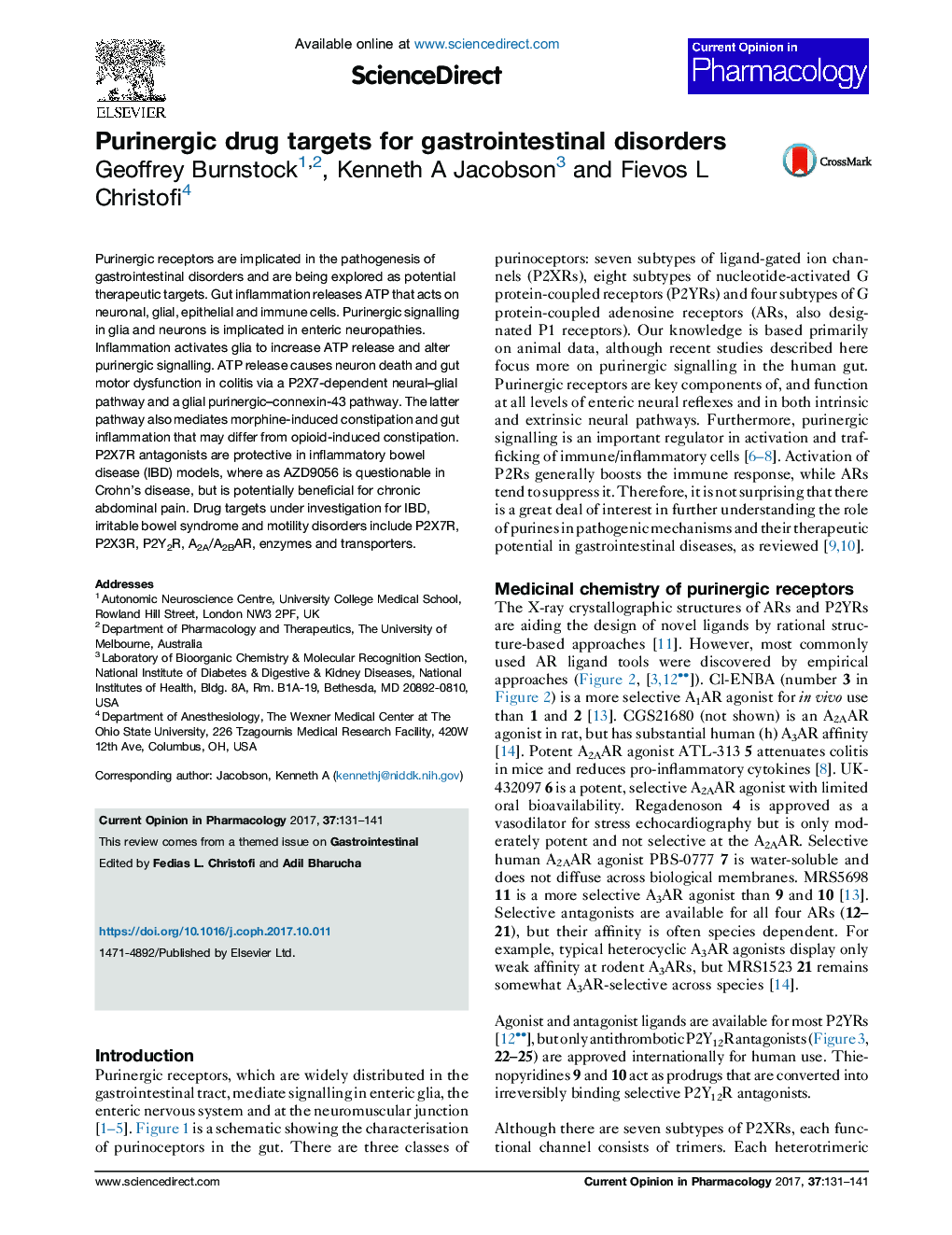| Article ID | Journal | Published Year | Pages | File Type |
|---|---|---|---|---|
| 8528734 | Current Opinion in Pharmacology | 2017 | 11 Pages |
Abstract
Purinergic receptors are implicated in the pathogenesis of gastrointestinal disorders and are being explored as potential therapeutic targets. Gut inflammation releases ATP that acts on neuronal, glial, epithelial and immune cells. Purinergic signalling in glia and neurons is implicated in enteric neuropathies. Inflammation activates glia to increase ATP release and alter purinergic signalling. ATP release causes neuron death and gut motor dysfunction in colitis via a P2X7-dependent neural-glial pathway and a glial purinergic-connexin-43 pathway. The latter pathway also mediates morphine-induced constipation and gut inflammation that may differ from opioid-induced constipation. P2X7R antagonists are protective in inflammatory bowel disease (IBD) models, where as AZD9056 is questionable in Crohn's disease, but is potentially beneficial for chronic abdominal pain. Drug targets under investigation for IBD, irritable bowel syndrome and motility disorders include P2X7R, P2X3R, P2Y2R, A2A/A2BAR, enzymes and transporters.
Related Topics
Life Sciences
Neuroscience
Cellular and Molecular Neuroscience
Authors
Geoffrey Burnstock, Kenneth A Jacobson, Fievos L Christofi,
